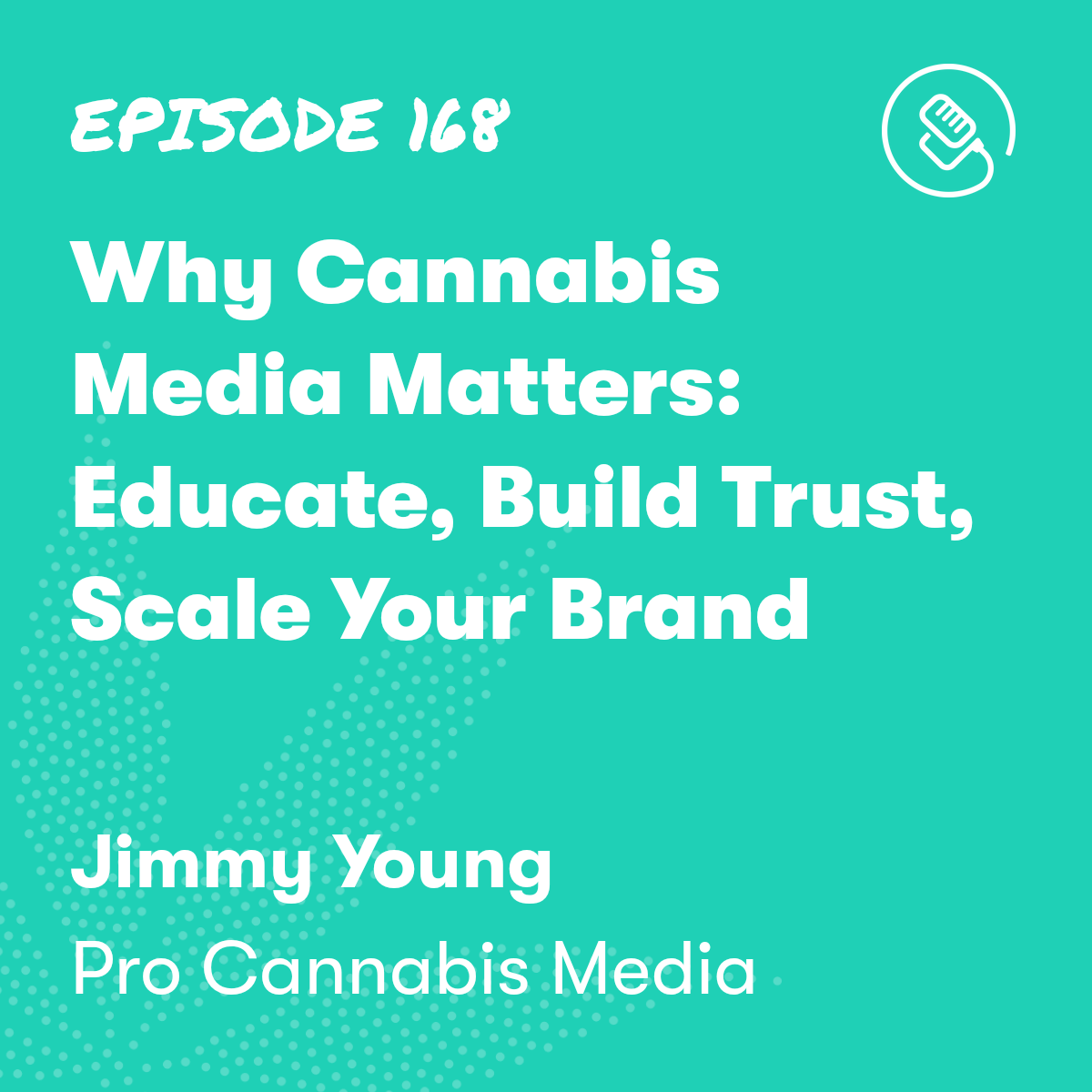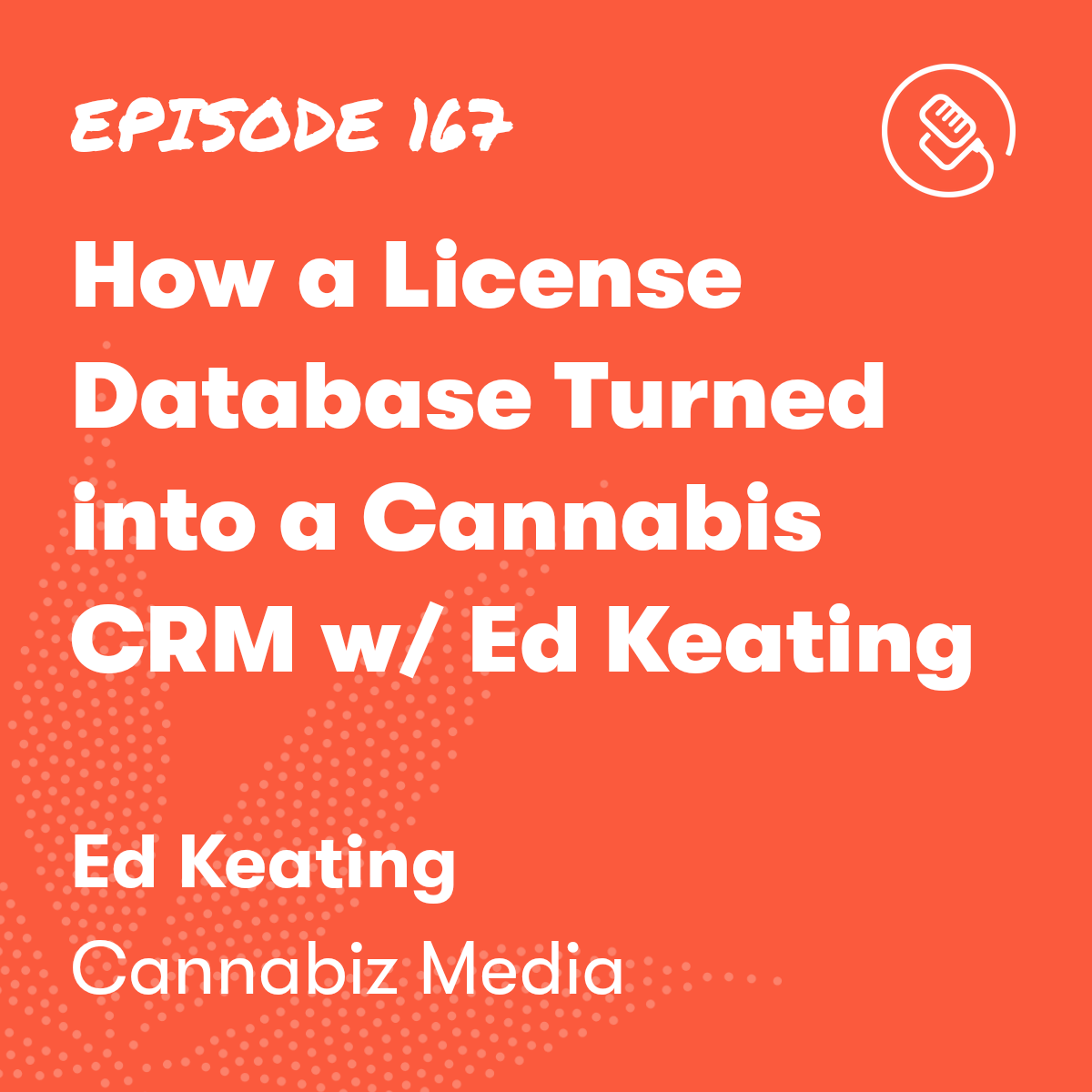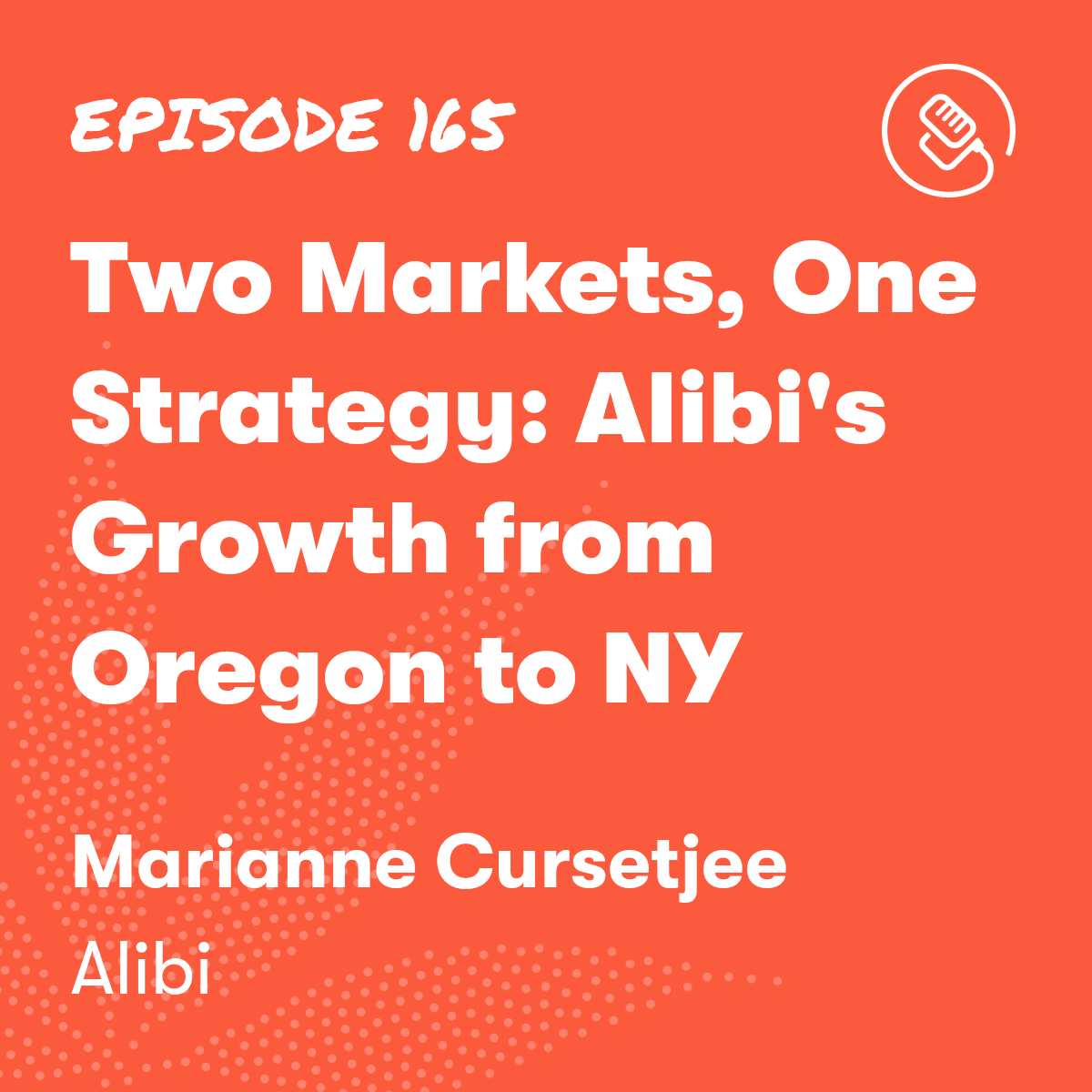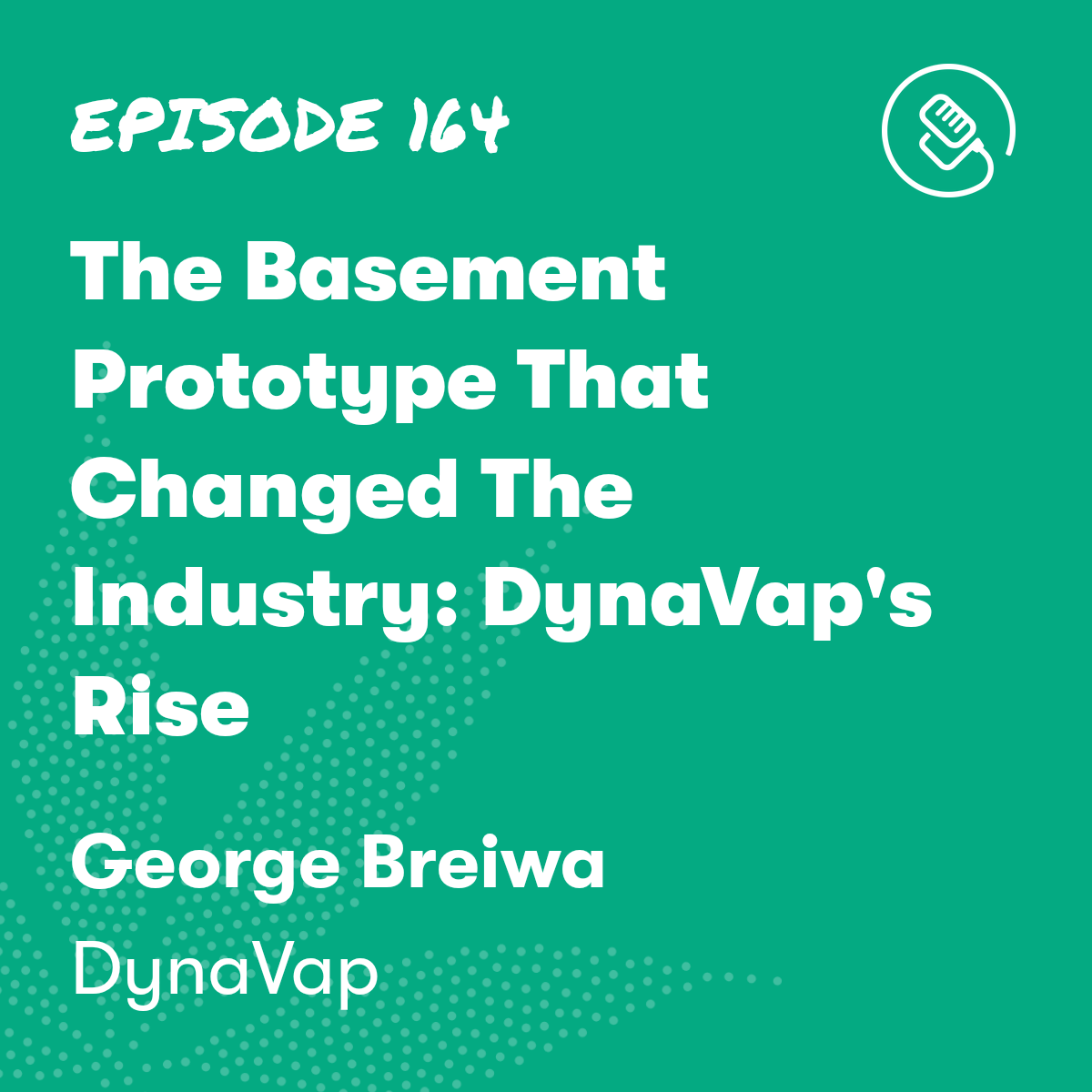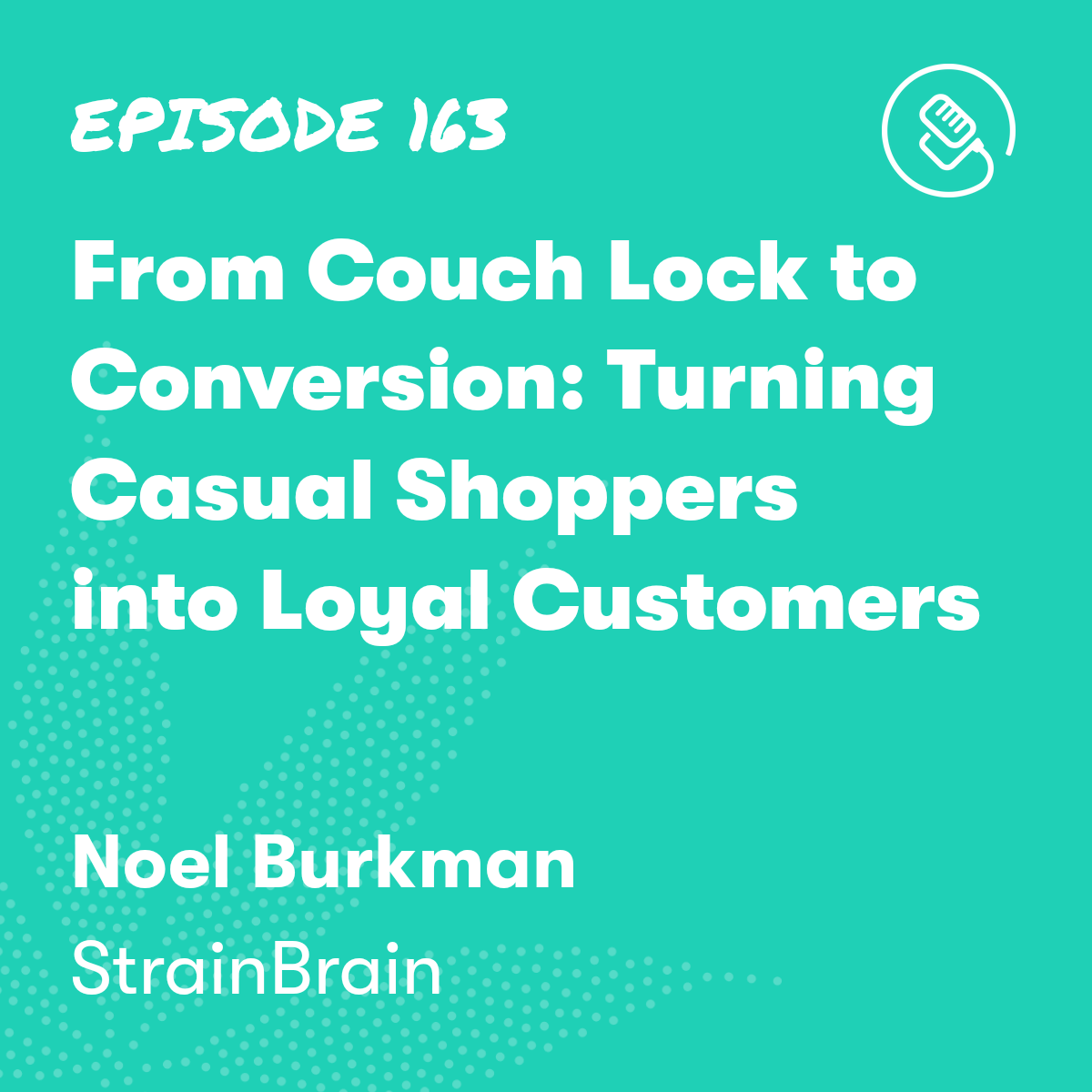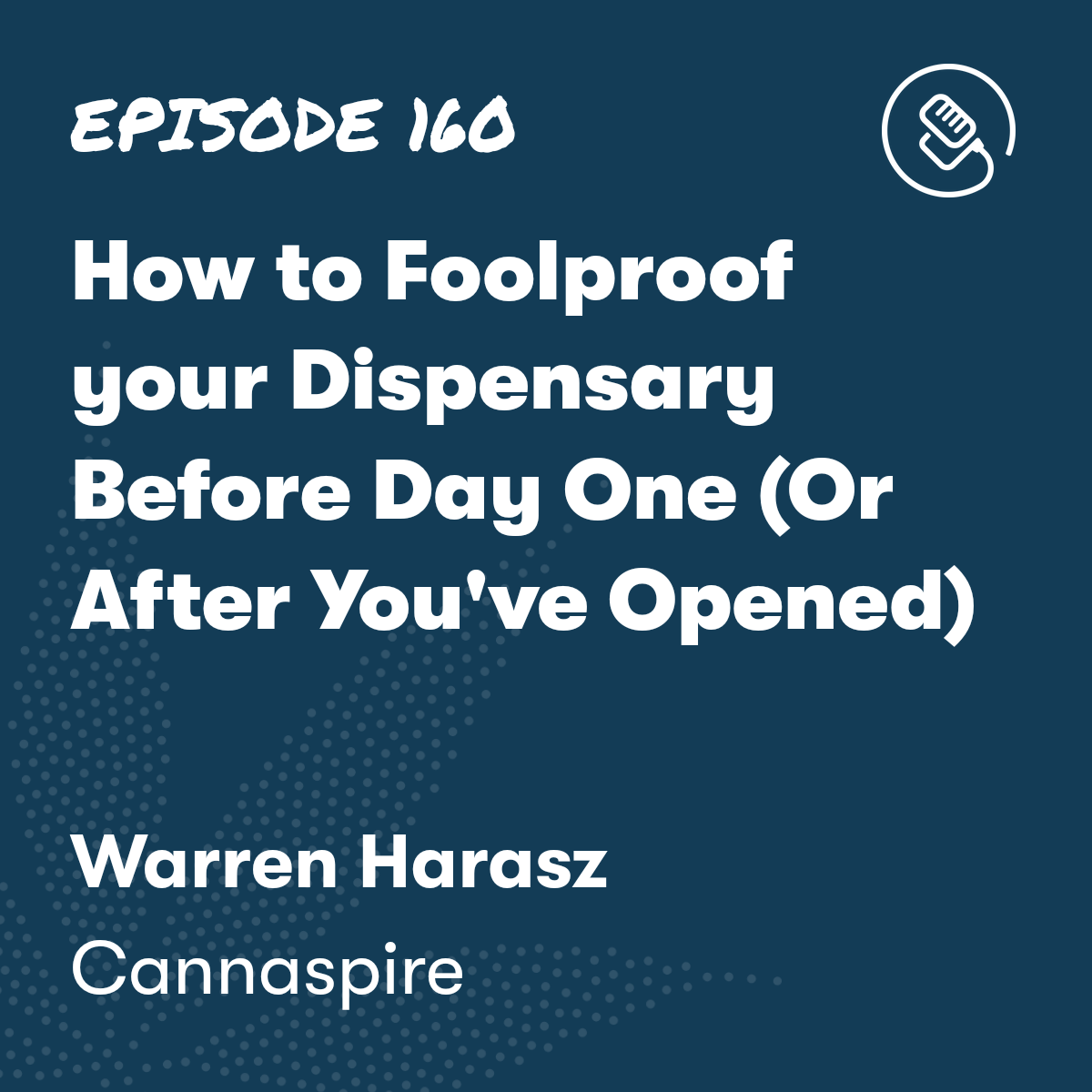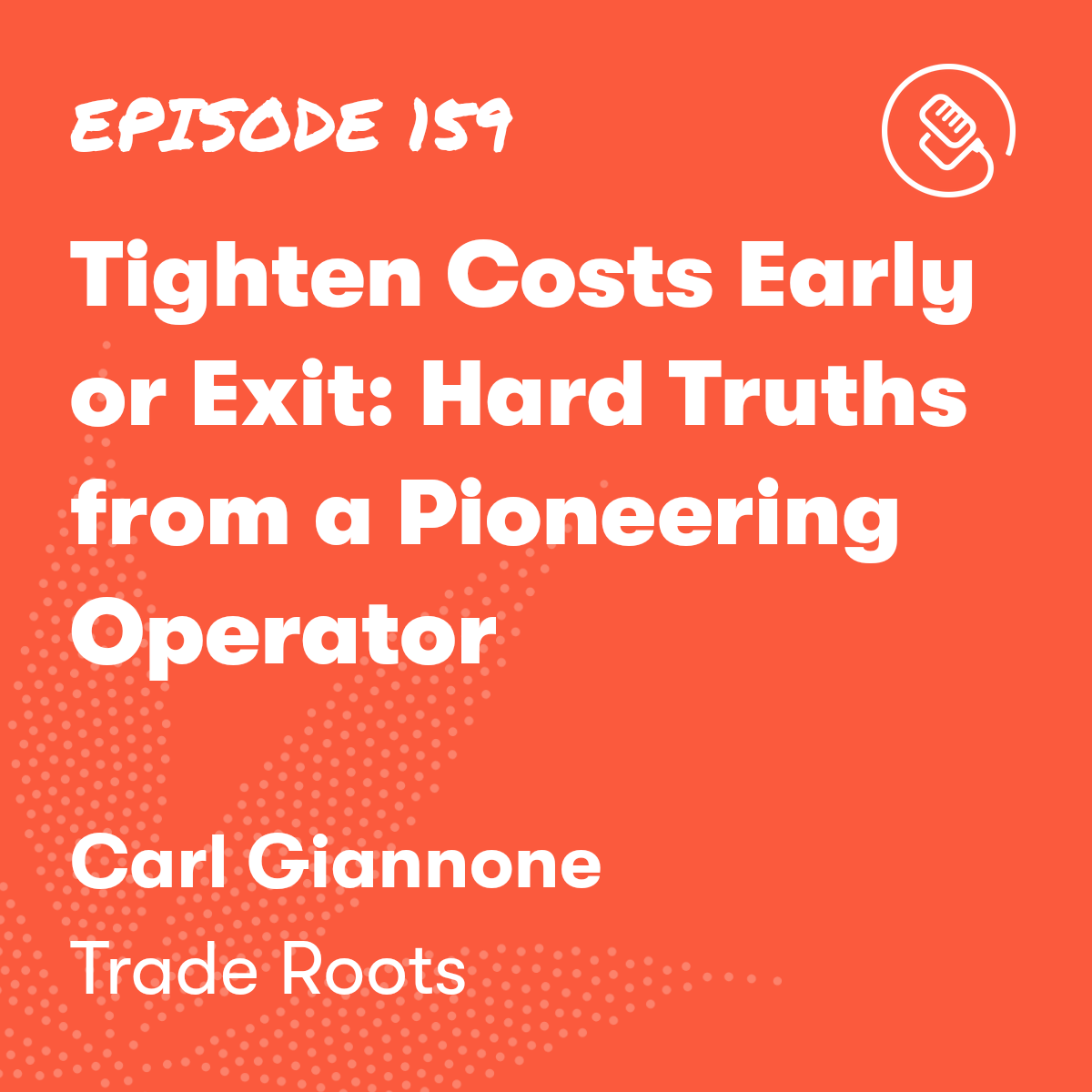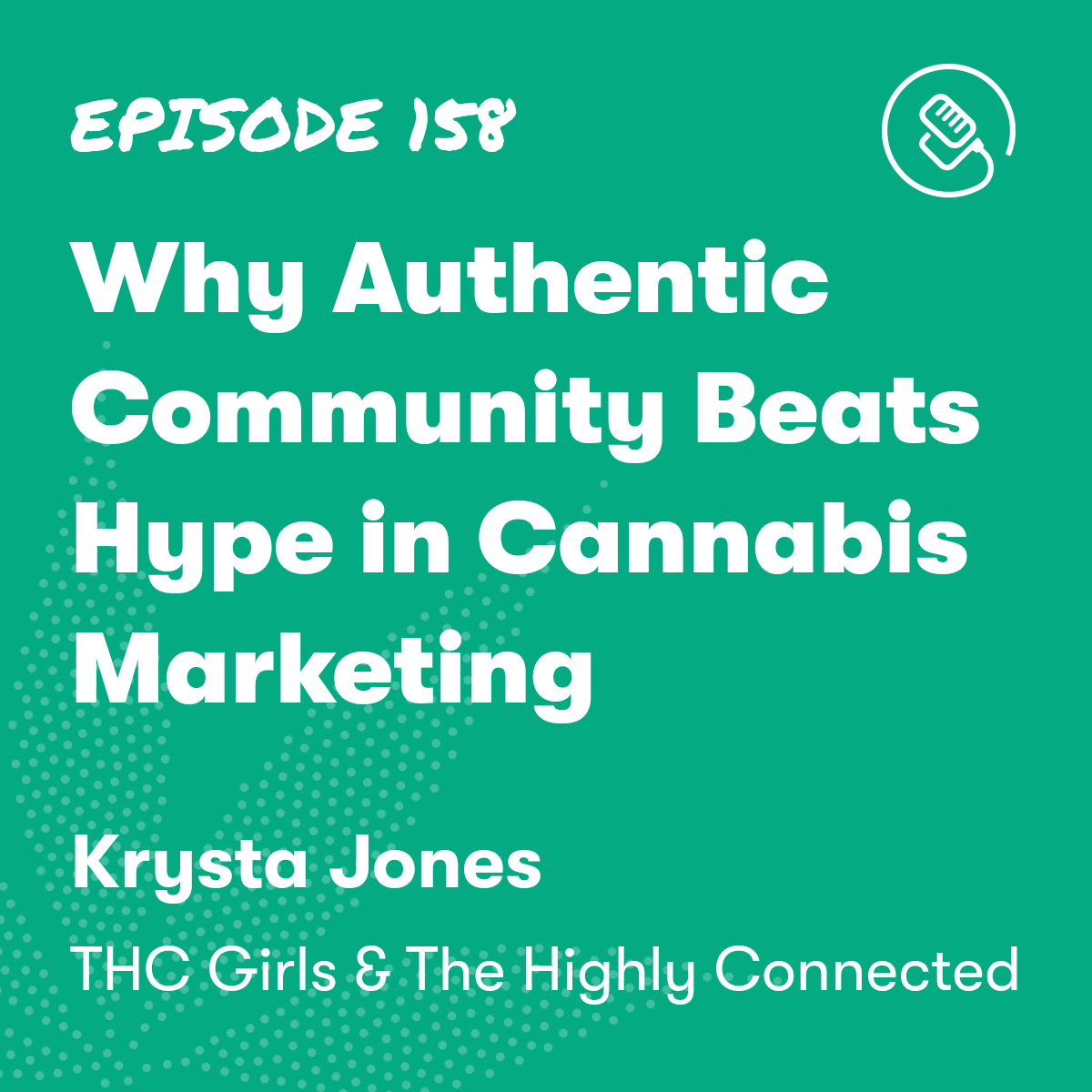

Green is Gold: Mastering Money Management in the Cannabis Industry
Episode Description

Episode Transcript
Tommy: Hey everyone. In this episode, we're joined by Sean from Palomino Consulting. Sean provides fractional CFO services to the industry, helping entrepreneurs make informed decisions based on financial data when growing and scaling their business. Sean provides advice to business owners looking to expand to another location, as well as 280E, budgeting, and a lot of different areas in the dispensary environment. Hope you guys enjoy.
Well, thank you so much for joining us, Sean.
Sean: Absolutely. Good to see you as always.
Tommy: I want to talk a little bit about starting a dispensary. What should an operator think about when creating their budget?
Sean: I think the most important thing for operators to understand is one, the effect of 288 to some level of the business. To do, you know, 12 months to 24 months pro forma, figure out your location, figure out what your lease is, and really understand how much it's going to cost to operate on them.
Tommy: So when you're, when they're building out their 24 month, pro forma. What are the things that they should consider when building that out?
Sean: Um, so rent is going to be the, one of the larger ones, right? Rent, employee leasing, or employee leasing or staffing, right? Depending on whether you pay someone to do that or you take it in house.
Advertising will be a huge component, especially as it relates to 280E. Repairs and maintenance, some of the smaller categories. but really, the key components here are going to be labor, gross margin, right? And. Uh, what that labor looks like as a percentage of revenue that you generate.
So the way that we kind of like to function at the operations that we're a part of, uh, is we would ideally in Nevada, it's like to be sub 11%. So if you make a million dollars, right, uh, your employee costs should be 110, 000 or less, right? So being able to look at that on a Pro Forma, uh, if you look at it as a percentage, it's very easy to control.
When you can add staff in, when you need to pull it back, uh, whether you're overstaffed or understaffed, if you set kind of a, a baseline level. So that 11 percent is that, that, that includes total labor. It's everything. Wow. Yeah. So 11 to 12%, that doesn't include security, right? And depending on what your management situation is with VMs, right?
You should be able to do that. You should be able to be, sub 12 percent or 11%. Um, you could be as high as 17%, right? Just depends on what the structure is. But assuming that, uh, assuming that none of the owners are working in the business, right? 12 percent or lower is good.
Tommy: And then if no owners are working in the business?
Sean: Uh, they'll probably want to front load their salaries a little bit. Uh, which is Depending on how the sales are doing, right? You can do that, but they'll, they'll be built into that. So I don't include owner salaries, uh, in the math that's associated with, so owner salaries, if you want to pay yourself that estimated out separately, they could fix them out.Don't build that into your overall labor.
Tommy: Even if the owner is operating in the business?
Sean: Yes. They keep it as a separate piece. You want, you want your variable staff. That's the line you want to track, right? Cause your owner salary, you could just change it arbitrarily, right? As no. You don't need to monitor its health, more or less.
Tommy: So 11 percent includes all labor, variable salary, and also your management. Yep. It does not include owner salaries. If you were running a dispensary, what should be the total with owner salary that is acceptable?
Sean: Well, if the owner salary is, you know, if it's one single owner, right, I mean, they can do whatever he wants as long as it doesn't reach the business, right?
If you're operating the business for entirely your benefit, right? I mean, your salary can be whatever you want it to be at the end of the year. Uh, but while it's operating, you're going to have to set baselines. So I would say, you know, lower owner's salary enough to survive.
Most of the time owners that are In that area of the business are very aggressively involved in purchasing more involved in the operations, right? They're they're there all the time. They're really more like the GM until they, you know, replace someone as that role. For that role, right? But if you're just big of a salary for dealing with the operator general operational stuff, you know, kind of oversight Maybe a little less but you want you want the money that's coming into the company to be allocated so you can take risk your ability to risk your cash and get labor in the door and hold them there.
Tommy: So having money in, as a, in your war chest affords you the ability to make a living through location?
Sean: Because a lot of other people don't. People run pretty lean, so the more cash you stack, right, the more opportunity you can kind of grab.
Uh, you'll be able to, you'll be able to take employees for people to some degree, right. You'll be able to stack talent. You'll be able to get better inventory pricing. Um, because you'll have cash. And everyone else is about to pay on terms, you might not have to, right? You mentioned, uh, gross profit. What is gross profit?
Gross profit is just income less cost of business. So that's the cost of the inventory yourself.
Tommy: So what should be the ideal gross profit?
Sean: So ideal gross profit in most retails is 50%. It seems like that's Keystone mergers. So it's just two times the To double the purchase price. So we buy something for 25, 50. That's a key margin.
Tommy: Talking about product. We're not talking about capital allocation, lease allocation.
Sean: Just product, just product. So what you're buying, what you're buying products for, you should always be trying to double or better.
Tommy: What are the other KPIs that somebody should really hold in on when creating their financial life?
Sean: Um, I think if you built a model around transactions, Right. And some kind of average ticket estimate, right? Those are kind of the two biggest KPIs in a model where you could actually track their performance against what you're doing in real time.
sales are kind of a variable number, right? But if you're no, if you know that your market's average ticket is 65, right? You can figure out how many customers you need to fill to meet what, I think that from KPI it's transactions per day, transactions per week. Right. Average ticket over time. Ultimately kind of prediction on average ticket in the next two years, depending on what wholesale looks like.
Tommy: Is there a, a benchmark that somebody should have for operating income, income before taxes?
Sean: Uh, ideally 25%, um, you could be as low as 15, but anything below 15, you're probably basically breaking even.
Tommy: Oh, got it. And then at your after tax benchmark, what would that be?
Sean: It's, it's basically, if you're, if you're profitable.
You basically take 10 percent off, what you made. Call it a 10 percent of your net rate. If you made two 50, right. Call your take home 150.
Tommy: What are some pitfalls that operators should know when building a budget in relation to cash outlay? So you're, you're building up this budget. What are the common mistakes that operators miss at the end of the year that causes them to, Oh my God, I owe 100, 000 in this. And I didn't really foresee.
Sean: Uh. The 280E stuff is the biggest, the biggest killer. It's not something that's exactly explicitly stated on it, uh, for the most part. Understanding that that is a cost you will see eventually, and not counting money that you don't have from a tax perspective is very important. I think looking at labor as a percentage of revenue as a mark is really important.
I think when you're setting those percentages. And you monitor them every month, get into a good rhythm of knowing when you're about to have some risk happen, or when you're about to have an event happen, right? The issue is if you don't have a pro forma to compare your actions to, right. And you don't monitor every month and close financials.
You don't know what you're doing. A lot of people will start a story. They won't do, they'll do some general, right? And then they'll kind of step away, right? They won't close the books for three months. They'll scramble to close them. , but your ability to close your books and track is the only thing that tells you how well you're So, it's not just the budget, right?
Like, you can set the budget, budget will change over time. Uh, it's, you have to track it. If you don't, if you don't have financials month over month, and you can't prove on paper that you're doing well, and you don't see it on a financial statement, that's a bad sign.
So the first couple of months is like to see where you kind of track with what you assume, right? And after that, uh, you kind of alter the historical months and change the growth rates to be more reasonable.
And then from there, once you kind of see where you're growing and how you're trending, you make operational decisions that either will make it go up or down.
Tommy: Operationally, I'm looking to expand. How do I know I'm ready?
Sean: You know, you're ready to expand if you have enough money to expand without asking. The other way is that if you're really skilled operators, right? A history of expanding more rapidly, right?
Um, this is going to be like high level, high level operators. They are going to notice in the data that their demand exceeds their supply, right? And it's not a blip. So for instance, in 2020, when COVID happened, right, everyone got a bunch of free money from the government and so all of a sudden everyone here started buying wheat, so every cultivator expanded, and now there's not enough money to meet that. It was a fake demand market. So being able to understand when your demand is exceeding the supply and how to, how to expand on that. Right. We also kind of do it piecemeal, being able to analyze those opportunities and understand when you're about to take a real risk that actually you understand and you can make a five year plan on.
Right. Then you could consider that.
Tommy: How does the retailer know that their demand is beyond their ability to supply?
Sean: They'll feel, they'll feel strained on the operation, right? They'll either, they won't be able to buy a product or they're capping out on the amount of people they can see a day.
So for most stores, it's a square footage problem, right? Uh, so your store may only be able to take, you know, 800 people a day, right? Um, especially during peak times, it's all going to be clocked in at like really specific hours. So if you start hitting a point where you literally can't fit people in the building, , you're going to know, or you're coming close, you'll notice your staff will get very, very irritated. You'll feel it. Um, and people, customers will let you know, but most importantly, the customers will always let you know,
Tommy: Are there any KPIs that an owner should look at before they expand? Is, are there certain areas of the business where, you know, okay, I'm ready now, have certain things in place and I'm concrete.
Sean: If your average ticket is capping, or not your average ticket, if your transactions are capping, I mean, that's the most important KPI, right?
If you can't break a number and customers are complaining and you're seeing, seeing a lot of complaints about it and your staff is kind of like, oh, it's always slanted, but for some reason this number doesn't move, uh, it's probably a good indication that you're ready to expand. If you're netting a good amount of money every month in profit, Uh, that's obviously a good indicator as well.
I mean, if you're, if you're netting 20, 22%, uh, and you have a cash surplus, then you're, you're probably in a position to start making some decisions.
Tommy: So that's a, that's a really good point. You talk about top end and then you talk about bottom end and the bottom end really speaks on how efficient you are at deploying capital.
Sean: Also transactions by channel, right? Like what's the demand of each channel inside the store? So. Whether that's transactions by e commerce, transactions by in store purchases, the pickup, curbside, uh, if you have a drive thru, right, things like that, tracking those independent areas on how they grow are very important because they can identify where, if it's segments like that, you can figure out whether you need to expand e commerce or if you need to expand store, right?
There's different, there's different ways to expand sales outside of just blowing up footprints, right? Fitting more people in the store. is one channel, but if the e com is not fully tapped, right, try pushing more people to e com, try and max everything out, right, try and get every KPI to its complete highest point.
And then look for a second.
And once you've granted an operation, you can see it scaling very quickly. There is opportunity cost associated with not acting if there's a great amount of time to scale. But there's also severe financial consequences if you scale at the wrong time or if you attempt to scale.
Tommy: I always think about, there are problems that you're trying to solve as a business owner. And if you haven't solved these problems yet, you can magnify that problem by adding another location. Yes. How do you identify if you've solved all the problems you need to solve before you take on another 2 million venture?
Sean: Some, some problems aren't apparent until you, until you scale. Yeah. Right. Um, definitely managing two locations before you can appropriately profitably manage one. Uh, it's probably not a good idea. Um, ultimately if the business doesn't make money, which is the key, right? Like you shouldn't be expanding. So you figure out how to make one store profit.
Once you figure out the market equation for that, you can duplicate it and you can replicate it.
Tommy: So we, we, we spoke a lot about what you should have in place, APIs, et cetera. Who should you have in place before you expand?
Sean: definitely controller, uh, accounting provider, GM. Uh, inventory manager and leads, um, and if you're talking about going into an expansion, right? I mean, you're gonna have a lot of time to
There's gonna be a lot of time to build out that story. You're gonna be in a hole for a 12 month period trying to get the thing online permitted correctly. You have, you have a year from the time you start the project to the time you actually have to staff it, right? Sending, having the staff be aware that they're about to potentially be merged over into two locations.
Understanding that doing an evaluation of the SOPs in the eventual store to make sure they actually cross over to the other store based on square footage, right? Based on different things. There may be some procedures that don't function, right? When you move locations. Uh, there may be different jurisdictions that raise laws, right?
Uh, making sure that everyone has a very good understanding from a revenue perspective what that means. Jurisdictions are different, right? Also Be prepared for what happens if that entity does not do what we projected to do. Can you sustain? Can you survive? Or do you have to liquidate?
Tommy: So how, like what should your war chest look like?
Sean: I'm of the opinion that you should keep as much money in the company as possible and distribute what you don't need to, to risk. Right? So if you're just buying products from the market, right, and you're on terms with everyone, you probably have a pretty Easy time managing your account, so you'll be able to see excess flow.
You don't really need to take a lot of massive risk on products, COD risk, right? Employee risk. I do think that probably having about 50 percent more than what you think you need on hand at all times is good, right? A lot of people make quarterly tax distributions, right? Once the business is sustainable enough, you can do that. Uh, but in an expanding business, if you do that, you'll recap your ability to apply. So it's more important for you to hire the staff than it is for someone to get a quarterly tax distribution.
Once an operation becomes very stable at a certain run rate and it doesn't really move around a lot, uh, numbers hold pretty consistently.
So how long should you be making a consistent amount of money before you determine that we are stable, we've reached stability?
You can reach stability for about six months, three, six months, and you'll be, you'll, if you start to see that trend hold and you have the same group of customers coming through, you'll know, you'll know you're good, uh, at least good enough to say that this is your baseline, right? but understanding whether your strategy is defensible or not is a separate question. You may be stable for six months, but Being aware of what's around you, and if new things pop up around you, being able to deal with them and, you know, ultimately kind of fight them, right? And win, it's only as good as your strategic, strategic position.
Cannabis is a very, very aggressive, people are very competitive, the licenses, and a lot of markets tend to be fairly limited. There's an opportunity to make a lot of money, and for a lot of operators, this is a zero sum game, right?
So, that, you made a really good point. And it's not only how stable you are over six months is how stable you'll be in five years.
What does that look like? So if you were to assess the risk in the market, what would be the few things that operators should really pay attention to?
So price per pound, population, whether your, uh, jurisdiction intends on releasing your licenses into the market, that's probably the biggest one. If they start to randomly issue licenses, right?
Oh, that could get a little crazy. , especially if they're allowed to come, depending on what the regs are, right, they may not be allowed to come too close to you. Just knowing when things like that are going to happen. , right. Uh, developing really good supply chain relationships, right?
Pay your bills, talk with people. Yeah. Understand how to leverage the supply chain to your advantage. Uh, there's a lot of different operators, a lot of different licenses on the wholesale side. It's the hardest part of the business. Even more difficult than retail or risk involved, they're good people.
Finding ways to create competitive advantage with suppliers in a creative way is long term.
Tommy: So, I want to go back to our, our conversation while it's happening. Running two stores, what is the biggest difference between running two stores versus one?
Sean: Well. Double the amount of staff is the first, probably. Anything you're experiencing that might be minor on the staffing side will become much more explosive, right?
Delineation of communication for consistency is very difficult, if you have one manager that was overstaffed in the first store uh, creating consistency across two stores just doubled that person's workload. Also, creating, transferring culture right? Sometimes it's more difficult. It's also very easy to get lost in the fact that there are two stores in your open works to see how bad potentially the second store could be as a risk.
If you don't make above certain amount of money, the other operation will have to float that operations indefinitely. So understanding that if you were making a quarter million dollars last month, but now you expanded it to two stores and you're not hitting your mark. You now have no problem while it shows up in two different ways, right?
Sean: So if you were taking distribution, you were getting comfortable, that's got to stop until both of them do well. You're creating, there's more safety if you're doing it that way, right? When one is doing really well and you kind of offset the losses until you're, until you're, it's definitely, you're in a period where everything goes to zero, basically, at least all of the profit you were experiencing, all your investors profit, most of it, right?
You have people who financed you in. They want returns, right? You have to ultimately explain to them why that's a good idea.
Tommy: You mentioned something that not a lot of people really think about is culture. Ultimately, when you run two locations, if they're, if they're far apart, you're kind of running two separate businesses.
And how do you ensure that the culture that you set in your first location is consistent
Sean: so there's an operator that's good. for a just want store, right? There's someone who can deal with the day to day operations, make it work, and then when they get moved to a two store situation, they panic and freeze, and they can't make it work.
They don't understand why what works one place doesn't work. They don't adapt to the change, right? They want the other store to fit their requirements, where it just might be different, right? And then you've got a tier of operator above that operator, right? When you start to get, when you're talking about like organizational structure, right?
This is the person that's above a gm, who's maybe closer to like a COO. Yeah. Like a director of operation, director of ops. Right. Like similar, you're, you're much higher than the org. That role is specific to being able to scale multiple, right? Mm-Hmm. . A lot of people can do one, the ability to do five at the same time and then not have them all break very different.
Right. I see a different set of skills required.
Tommy: So you have a GM managing the store perfect. Opening up another store, he or she may now have to manage two stores. And you may have to assess is this It's just the right person to do this role. And the risks that I always see operators make is promoting somebody before they're ready.
And it's really hard to de promote them. Yep. That's what's right now.
Sean: Oh yeah. It's a, that's a common one. I've seen it. I've seen it. I've seen it. Uh, I've been involved in, in, in some of the, some situations where I've been asked to cross the table. So this is the difference between. Owners have to understand where their skills are and where they are not.
Not all owners are operators. If you're not an operator, understand that you're not. And understand you need to hire one. You can, you can accidentally succeed with one store. It's possible, once you go to two, the likelihood of that second ending the exact way the first one did is almost zero.
If you open that second store and it doesn't perform the way you thought it would, and you're using all of your same SOPs, you need to find an operator. That means your thesis is flawed, right?
There's something you don't understand. And when there's something like that, that you don't, that they don't understand, some owners will double down on their employee that doesn't have the correct information to actually make those decisions. That's very dangerous.
Especially if you're limited capital, right? Um, some people's solution to that is just to raise more money. Uh, which is, uh, another solution.
Knowing when to ask for help and knowing when you're out of your element.
Like, it's important. There, there are a lot of tax related questions. Even I, I like, I call people all the time. If you've got more of a background than me, I want to know. And if you can't pass the one storm mark, and you're having a hard time scaling operations, and your time is too long, and you don't know how to Scale those SFPs across, find someone who really understands it.
Someone who comes from a manufacturing background, another retail background. Uh, someone who's a high up, high level, not like, uh, this isn't a person you're going to pay 80 grand a year. It's a person you're going to pay hundreds of thousands of dollars. That's their skill set. That's what their skill sets value is, right?
Cause they can go into any company and they can scale out five stores. They can make you a million dollars. That's their value. A lot of operators have an, a lot of owners have an unwillingness to spend that much. Uh, because they think that that person is adding more value to the business than they are.
In actuality, that's true. That's why you're paying them though. They are adding more value to the business at that point in time. Well, you know,
Tommy: what else should we cover, Sean, that you think people should think about?
Sean: Cannabis as a business, right? It's just now starting to develop to some level integrated systems. So far, you know, a lot of the, a lot of the products that entered the market from a technology perspective, from really almost everything, machinery, right? They were all independent systems that were re skinned from another system. I think now we're starting to see the evolution of what it could look like, right?
When systems talk to each other in kind of a, a true, more traditional way, I think that we are approaching a point where there is going to be an opportunity. To automate a lot of things in a severe, not, get an, get an extreme,
understanding that technology is literally your best friend it is the only thing that will truly separate you from other stores, right? There are solutions promotion from calendars, right? And then there's solutions that are technology driven that you can scale across wherever you are, right?
Tommy: So what are some tech sacks that retailers should really, really call in on when they're looking to scale?
Sean: So for all of our stores that we operate here, uh, we're Dutchie, uh, here for e commerce and then, my software for accounting.
So what, what is your software? My software is called Racetrack, uh, and it's a combination of a couple different pieces, but, uh, it's a Dutchie equipped integration, flow information through and then we also connect different things to it over time. So, uh, cash recyclers, uh, any kind of machinery that has the API call out.
So there are ways to create efficiency that if you talk with your technology providers, you may find ways to make more money or aggressively or win more. If that, if you're just trying to brute force people out.
Tommy: So what, some of these efficiencies, what does that allow a retailer to do?
Sean: Spend more time on making money, right?
Like. All of the, all of the tasks that All created their systems and touching each other are manual tasks, right? The more time you spend doing tasks, the more money you spend on manual tasks, the less you go to the business. Instead of spending 5, 000 a month, a marketing person who deeply understands cannabis and fix things and can help you grow.
You're spending 5, 000 a month on putting data into a system. Every dollar you save somewhere else becomes a dollar you can utilize elsewhere or so, or take for yourself. And
Tommy: you know what? What we also find is There's a lot of operators that they spend their money in manually transferring data, but there's not a lot of time spent in analyzing what the data means to make the actual decision.
How can our, how can our listeners find you?
Sean: I'm on LinkedIn. You can reach out to me there.
Sean Kennedy. I run a company called Palomino Consulting. Uh, P A L O M I N O, consulting, obviously. And my email is sean, S E A N, at palomino. consulting. LinkedIn or email me. Awesome.
Tommy: Well, thank you so much for joining us. I've learned a lot.
Sean: Always a good time. Always good to see you.
